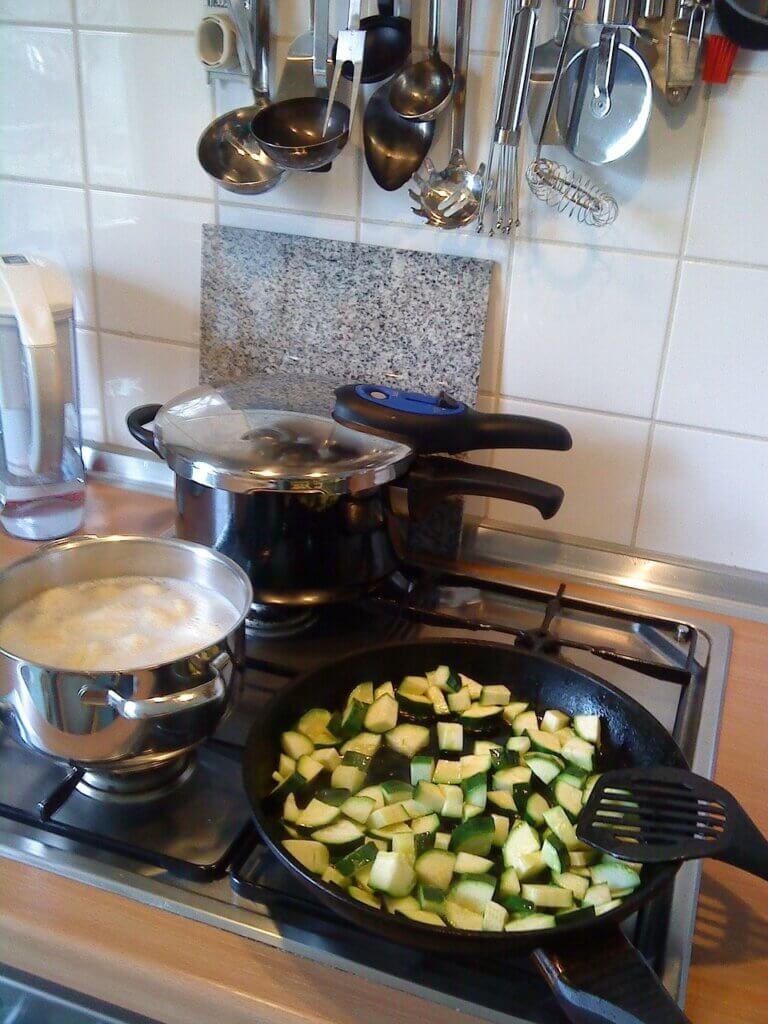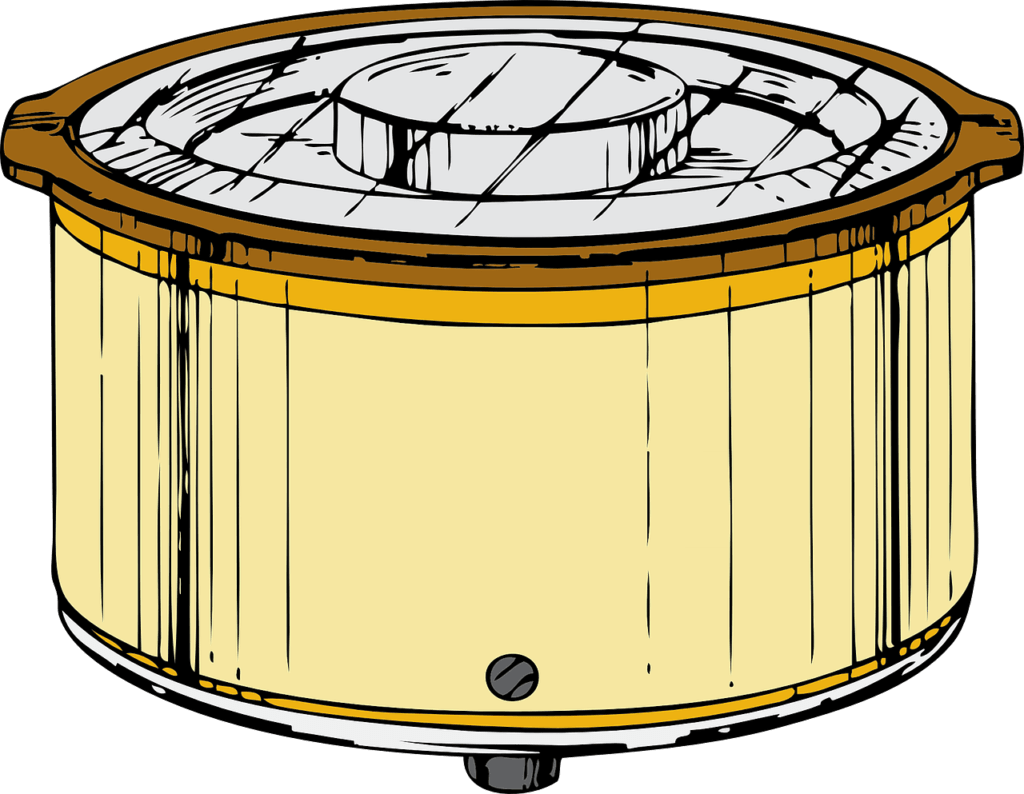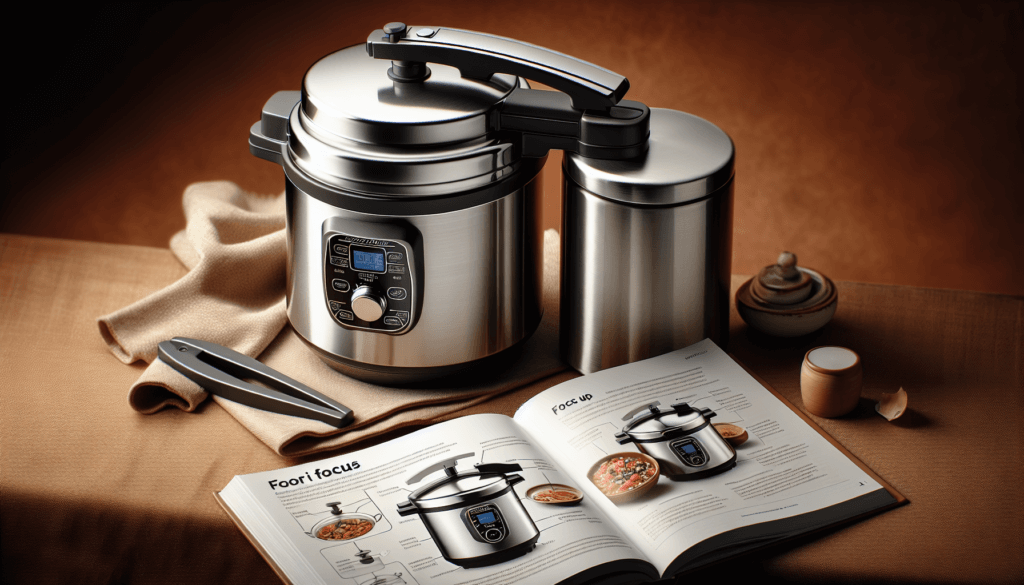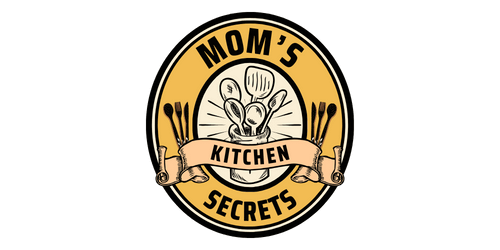If you’ve recently purchased a pressure cooker but feel overwhelmed by the thought of using it, fear not! This beginner’s guide is here to help you navigate the world of pressure cooking with ease and confidence. In this article, you’ll discover simple and essential tips to get started, learn about the benefits of using a pressure cooker, and explore some delicious recipes that will make your taste buds dance. So, grab your apron and prepare to unleash your inner kitchen maestro as we embark on this exciting culinary journey together.
Choosing the Right Pressure Cooker
Understanding the different types of pressure cookers
When it comes to choosing a pressure cooker, it’s important to understand the different types available on the market. The two main types are stovetop pressure cookers and electric pressure cookers. Stovetop pressure cookers require heating on a stove, while electric pressure cookers are standalone appliances that plug into an electrical outlet.
Stovetop pressure cookers are well-known for their durability and ability to reach higher pressures, which can lead to faster cooking times. On the other hand, electric pressure cookers are more convenient and easier to use, as they often come with pre-set cooking functions and timers. Ultimately, the choice between stovetop and electric pressure cookers depends on your personal preferences and cooking needs.
Factors to consider when selecting a pressure cooker
When selecting a pressure cooker, there are a few key factors to consider. First and foremost, you’ll want to consider the size of the pressure cooker. Pressure cookers come in various sizes, ranging from small 4-quart models to larger 8-quart models. It’s important to choose a size that fits your cooking needs and the size of your household.
Another important factor to consider is the material of the pressure cooker. Stainless steel pressure cookers are known for their durability and resistance to staining and odors. Aluminum pressure cookers, on the other hand, heat up quickly but may be more prone to scratching and discoloration. Consider your cooking preferences and priorities when deciding on the material of your pressure cooker.
Lastly, it’s important to consider the safety features of the pressure cooker. Look for pressure cookers with features like pressure release valves and locking mechanisms to ensure safe and hassle-free cooking experiences.
Getting Started with Your Pressure Cooker
Learning the basic parts of a pressure cooker
Before you start using your pressure cooker, it’s essential to familiarize yourself with its basic parts. Pressure cookers typically consist of a pot or a cooking vessel, a lid with a sealing ring, a pressure release valve, and a locking mechanism. Understanding how these parts work together will help you operate your pressure cooker effectively and safely.
The pot or cooking vessel is where the food is placed for cooking. It usually has measurement markings on the inside to help you add the right amount of liquid and ingredients.
The lid of the pressure cooker is equipped with a sealing ring, which creates an airtight seal when the pressure cooker is locked. This seal ensures that pressure builds up inside the cooker for faster and more efficient cooking.
The pressure release valve is responsible for releasing excess pressure during cooking. It’s important to understand the different pressure release methods, which we’ll discuss in the next section.
Lastly, the locking mechanism keeps the lid securely in place during cooking. This prevents any accidents or spills that could occur if the lid were to come off while the pressure cooker is pressurized.
Knowing the safety features and how to use them
Safety is of utmost importance when using a pressure cooker. That’s why it’s crucial to familiarize yourself with the safety features of your specific pressure cooker and how to use them correctly.
One key safety feature is the pressure release valve. This valve allows you to release excess pressure before opening the lid. There are typically two pressure release methods: natural release and quick release. Natural release involves letting the pressure inside the cooker come down on its own, while quick release involves manually releasing the pressure using the valve. It’s important to follow the manufacturer’s instructions for each specific pressure cooker model, as the methods for using the pressure release valve can vary.
Another safety feature to be aware of is the locking mechanism. This mechanism ensures that the lid is securely locked in place during cooking, preventing any accidents that could occur from the lid coming off while there is still pressure inside the cooker.
Preparing your pressure cooker before first use
Before using your pressure cooker for the first time, it’s important to clean and prepare it properly. This will ensure that any manufacturing residues or impurities are removed, and that your pressure cooker is ready for safe and efficient cooking.
Start by washing all the parts of your pressure cooker, including the pot, lid, sealing ring, and any accessories, with warm soapy water. Rinse them thoroughly to remove any soap residue.
Next, check the sealing ring for any damages or cracks. The sealing ring is a crucial component that helps create an airtight seal. If you notice any damages, it’s important to replace the sealing ring before using the pressure cooker.
Once you’ve cleaned and inspected all the parts of your pressure cooker, reassemble them and perform a test run. Add some water to the pot, close the lid, and bring the pressure cooker up to pressure according to the manufacturer’s instructions. Allow it to maintain pressure for a few minutes, then release the pressure using the pressure release valve. This test run will help ensure that your pressure cooker is functioning properly and that you’re familiar with its operation.

Using the Pressure Cooker Safely
Understanding the pressure release methods
When it’s time to release the pressure in your pressure cooker, it’s important to understand the different methods available. Each method has its own purpose and specific instructions to follow.
One common pressure release method is the natural release method. This method involves letting the pressure inside the cooker come down naturally on its own without any intervention. Simply turn off the heat and allow the pressure cooker to cool down. This method is suitable for dishes that benefit from longer cooking times, such as soups and stews, as it allows the flavors to meld together.
Another pressure release method is the quick release method. This method involves manually releasing the pressure using the pressure release valve. It’s important to follow the manufacturer’s instructions for your specific pressure cooker model, as the process for releasing the pressure can vary. Quick release is typically used for recipes that require shorter cooking times or when you need to stop the cooking process immediately.
Ensuring proper pressure during cooking
Proper pressure is essential for successful pressure cooking. It’s important to monitor the pressure during cooking to ensure that your food is being cooked at the desired temperature and for the appropriate amount of time.
Most pressure cookers have a pressure indicator that shows whether the cooker has reached the desired pressure. This indicator can be a visual marker, such as a red ring, or a pressure gauge that displays the pressure in psi (pounds per square inch).
To maintain proper pressure, adjust the heat on your stovetop pressure cooker accordingly. Electric pressure cookers often have pre-set cooking functions and timers, so you can simply select the desired cooking mode and let the appliance do the work for you.
Avoiding common mistakes that can lead to accidents
While pressure cookers are generally safe to use, it’s important to avoid common mistakes that can potentially lead to accidents. By being aware of these mistakes and taking precautions, you can ensure a safe cooking experience with your pressure cooker.
One common mistake is overfilling the pressure cooker. It’s important to leave enough headspace to account for the expansion of food and liquid during cooking. Overfilling can result in clogged pressure release valves, which can lead to a dangerous buildup of pressure.
Another mistake to avoid is opening the pressure cooker before the pressure has been fully released. It’s crucial to follow the manufacturer’s instructions for releasing the pressure and never force the lid open. Opening the pressure cooker prematurely can result in steam burns or spilling hot liquid on yourself or your surroundings.
Lastly, ensure that you always use the recommended amount of liquid for pressure cooking. Insufficient liquid can lead to inadequate pressure buildup, resulting in undercooked food or potential damage to the pressure cooker.
Mastering Pressure Cooking Techniques
Understanding pressure cooking times and ratios
One of the key aspects of pressure cooking is understanding the cooking times and ratios for different ingredients. Pressure cooking can significantly reduce cooking times compared to traditional stovetop cooking methods. However, it’s important to note that not all ingredients require the same cooking times and ratios.
For example, tender meats like chicken breasts or fish fillets may only require a few minutes of cooking time, while tougher cuts of meat like beef stew meat may need a longer cooking time to become tender and flavorful.
It’s also important to consider the ratio of liquid to ingredients. Pressure cookers require a certain amount of liquid to build the necessary pressure for cooking. As a general rule of thumb, most pressure cooker recipes require at least 1 cup of liquid for every 4 cups of ingredients. However, this ratio can vary depending on the specific recipe, so be sure to follow the instructions provided in your chosen recipe.
Adjusting recipes for pressure cooking
If you’re new to pressure cooking, you may be wondering how to adapt your favorite recipes for this cooking method. The good news is that many traditional recipes can be easily adjusted for pressure cooking.
One important adjustment to make is reducing the cooking time. As mentioned earlier, pressure cooking significantly reduces cooking times compared to traditional methods. A good starting point is to reduce the cooking time by about two-thirds of the original stovetop cooking time. For example, if a recipe instructs you to cook a dish on the stovetop for 30 minutes, you can try pressure cooking it for approximately 10 minutes.
It’s also important to adjust the amount of liquid used in the recipe. Pressure cookers require less liquid than traditional cooking methods due to the sealed environment. As a general rule, you can reduce the amount of liquid by about half compared to the original recipe. However, it’s advisable to check the specific instructions for each recipe to ensure the best results.
Using the right amount of liquid and ingredients
When using a pressure cooker, it’s crucial to use the right amount of liquid and ingredients for successful cooking. The amount of liquid required will vary depending on the specific recipe, but as a general rule, most pressure cooker recipes require at least 1 cup of liquid.
It’s important to note that the liquid used in a pressure cooker recipe serves multiple purposes. Not only does it help build pressure, but it also adds moisture to the dish, preventing it from drying out. When adding liquid to your pressure cooker, consider the ingredients you’re using and the desired outcome of your dish.
In addition to the liquid, it’s important to consider the amount of ingredients you’re adding to the pressure cooker. Overfilling the pressure cooker can lead to clogging of the pressure release valves and uneven cooking. Therefore, it’s important to leave enough space for the ingredients to expand during cooking. As a general rule, do not fill the pressure cooker more than two-thirds full.

Cooking with a Pressure Cooker: Tips and Tricks
Batch cooking and meal prepping with a pressure cooker
One of the great advantages of using a pressure cooker is its ability to cook large batches of food in a relatively short amount of time. This makes it perfect for batch cooking and meal prepping.
Batch cooking involves making a large quantity of a particular dish and freezing individual portions for later use. With a pressure cooker, you can easily cook large batches of soups, stews, or even rice and beans, and store them in the freezer for quick and convenient meals throughout the week.
Meal prepping, on the other hand, involves preparing multiple meals ahead of time, which can be a huge time-saver during busy weekdays. With a pressure cooker, you can quickly cook proteins like chicken breasts or beef, steam vegetables, and even make grains like quinoa or brown rice in a fraction of the time compared to traditional cooking methods.
Quick and easy recipes for beginners
If you’re new to pressure cooking, it’s always helpful to start with quick and easy recipes that are beginner-friendly. There are numerous recipes available specifically designed for pressure cookers, ranging from soups and stews to pasta dishes and desserts.
Some quick and easy recipes that are perfect for beginners include chili, pulled pork, vegetable soup, and macaroni and cheese. These recipes often require minimal prep work and cooking times, making them ideal for those who are just getting started with their pressure cooker.
Tips for achieving the perfect texture and flavor
To truly master pressure cooking, it’s important to pay attention to the texture and flavor of your dishes. With the right techniques and tips, you can achieve perfectly cooked food that’s both tender and flavorful.
One tip is to season your ingredients well before cooking. Pressure cooking can intensify flavors, so it’s important to season your food adequately to ensure a well-balanced taste. Don’t be afraid to experiment with different herbs, spices, and seasonings to enhance the flavors of your dishes.
Another tip is to take advantage of the pressure cooker’s ability to tenderize tough cuts of meat. With pressure cooking, you can turn inexpensive cuts of meat into melt-in-your-mouth masterpieces. Be sure to follow recipes that specifically call for pressure cooking tougher cuts of meat, as they often require longer cooking times to achieve that desired tenderness.
Cleaning and Maintaining Your Pressure Cooker
Proper cleaning and maintenance routines
Proper cleaning and maintenance of your pressure cooker are essential for its longevity and continued performance. After each use, make sure to clean all parts of your pressure cooker, including the pot, lid, sealing ring, and any accessories, with warm soapy water. Rinse them thoroughly to remove any soap residue.
The sealing ring, in particular, should be checked regularly for any signs of wear or damage. If you notice any cracks or tears, it’s important to replace the sealing ring to ensure a proper seal.
Additionally, it’s recommended to periodically clean the pressure release valves to remove any debris or food particles that may have accumulated. Refer to the manufacturer’s instructions for the specific cleaning recommendations for your pressure cooker model.
Removing stubborn stains and odors
Over time, you may encounter stubborn stains or lingering odors in your pressure cooker. Fortunately, there are simple methods to address these issues and restore your pressure cooker to its pristine condition.
For stubborn stains, fill the pressure cooker with warm water and a few tablespoons of baking soda. Let it soak for a few hours or overnight, then scrub away the stains with a soft brush or sponge. Rinse the pressure cooker thoroughly to remove any residue.
To remove lingering odors, fill the pressure cooker with a mixture of water and vinegar. Bring the mixture to a boil and let it simmer for a few minutes. The acidity of the vinegar should help neutralize the odors. After simmering, rinse the pressure cooker well to remove any vinegar smell.
Replacing parts and ensuring longevity
With proper care and maintenance, your pressure cooker can last for many years. However, certain parts may need to be replaced over time to ensure optimal performance and safety.
The sealing ring is one component that may need replacing after a certain period. Sealing rings can become worn or lose their elasticity over time, leading to poor sealing and increased cooking times. Refer to the manufacturer’s instructions for guidance on when and how to replace the sealing ring.
Other parts that may need replacing include the pressure release valve or any accessories specific to your pressure cooker model. If you notice any parts that are damaged or malfunctioning, reach out to the manufacturer for replacements to ensure the longevity and safety of your pressure cooker.

Expanding Your Pressure Cooking Skills
Exploring advanced pressure cooking techniques
Once you’ve mastered the basics of pressure cooking, you may be ready to explore more advanced techniques and recipes. Advanced pressure cooking techniques allow you to push the boundaries and create even more flavorful and complex dishes.
One advanced technique is pressure frying. This technique involves using a pressure cooker as a deep fryer, allowing you to achieve crispy and golden fried foods in a fraction of the time compared to traditional frying methods. From fried chicken to crispy French fries, pressure frying opens up a whole new world of culinary possibilities.
Another advanced technique is pressure canning. Pressure canning allows you to safely preserve foods like fruits, vegetables, and even homemade sauces and broths. This technique requires specific guidelines and knowledge to ensure the proper canning process, so be sure to consult reputable sources or books dedicated to pressure canning for detailed instructions.
Trying out different cuisines and recipes
One of the joys of pressure cooking is its versatility and ability to tackle a wide range of cuisines and recipes. Don’t be afraid to experiment and try out recipes from different culinary traditions.
From Indian curries to Mexican chili, Italian risotto to Asian stir-fries, pressure cooking can handle it all. Each cuisine brings its own unique flavors and ingredients, allowing you to explore and expand your cooking skills with your pressure cooker.
Consider investing in cookbooks or exploring reputable cooking websites that feature recipes specifically designed for pressure cookers. These resources can provide excellent inspiration and guidance as you venture into new cuisines and flavors.
Experimenting with one-pot meals and desserts
One-pot meals and desserts are perfect for pressure cooking, as they allow you to cook everything together in a single vessel, minimizing cleanup and maximizing flavor.
For one-pot meals, consider dishes like jambalaya, paella, or even risotto. These dishes often benefit from the intensity of pressure cooking and the ability to infuse flavors into every ingredient.
When it comes to desserts, the pressure cooker can be a game-changer. From cheesecakes to bread pudding, there are countless dessert recipes specifically designed for pressure cookers. The moist and evenly cooked environment of the pressure cooker can result in perfectly tender and moist desserts.
Common Troubleshooting and FAQs
Troubleshooting common issues with pressure cookers
While pressure cookers are generally reliable appliances, occasionally, issues may arise. Here are some common problems you may encounter with your pressure cooker and troubleshooting tips to help you resolve them:
Steam escaping from the sides: Check that the sealing ring is properly inserted and that the lid is locked securely. Also, ensure that the pressure release valve is in the correct position.
Food burning on the bottom: Make sure you’re using enough liquid and not overfilling the pressure cooker. Stir the ingredients well before cooking to avoid any sticking or burning.
Lid not opening after cooking: Never force the lid open. If the lid is stuck, it’s likely due to residual pressure inside the cooker. Wait for the pressure to release completely before attempting to open the lid.
If you encounter any other issues or problems with your pressure cooker, it’s best to consult the manufacturer’s instructions or reach out to their customer support for specific guidance.
Answering frequently asked questions about pressure cooking
As a beginner, you may have a lot of questions about pressure cooking. Here are answers to some frequently asked questions to help address your concerns:
Is pressure cooking safe? When used properly, pressure cookers are safe to use. It’s important to follow the manufacturer’s instructions and understand the safety features of your specific pressure cooker.
Does pressure cooking destroy nutrients? Pressure cooking retains more nutrients compared to traditional cooking methods, as it requires less cooking time and uses less liquid.
Can I open the pressure cooker before the pressure has been released? It’s important to never force the pressure cooker lid open before releasing the pressure. This can result in steam burns or spills. Always follow the recommended pressure release methods for your specific pressure cooker model.

Comparing Pressure Cookers to Other Cooking Methods
Benefits and drawbacks of pressure cooking
Pressure cooking offers numerous benefits that make it a popular cooking method among home cooks.
One of the key benefits is the significant reduction in cooking times. Pressure cooking can cut cooking times by up to 70%, allowing you to prepare meals quickly, especially for busy households.
Another benefit is the retention of nutrients. The shorter cooking times and minimal use of liquid help preserve vitamins and minerals in the food, resulting in healthier meals.
Pressure cooking is also known for its ability to tenderize tough cuts of meat, making it a cost-effective option for those on a budget. Additionally, it can enhance the flavors of ingredients, resulting in more flavorful dishes.
However, like any cooking method, pressure cooking has its drawbacks. It requires some learning and familiarization to operate safely and effectively. Also, its high internal pressure can limit certain cooking techniques, such as browning or crisping certain foods.
Comparing pressure cooking to slow cooking and stovetop cooking
Pressure cooking, slow cooking, and stovetop cooking each have their own advantages and are suited for different cooking needs.
Pressure cooking is best for those who are short on time and want to prepare meals quickly. It’s also ideal for cooking dishes that require tenderizing tough cuts of meat or infusing flavors into ingredients in a short amount of time.
Slow cooking, on the other hand, is perfect for those who prefer a hands-off approach to cooking. It allows for longer cooking times at low temperatures, resulting in tender and flavorful dishes. Slow cookers are also great for batch cooking and meal prepping.
Stovetop cooking, or traditional cooking methods, provides more control and flexibility over the cooking process. It allows for precise temperature adjustments and various cooking techniques, such as searing and sautéing. Stovetop cooking is often favored for dishes that require direct heat and quick cooking, such as stir-fries and certain sauces.
Ultimately, the choice of cooking method depends on your specific preferences, time constraints, and the type of dish you’re preparing.
Conclusion
Congratulations on completing this comprehensive beginner’s guide to using a pressure cooker! We hope you now have a better understanding of pressure cookers, their benefits, and how to use them safely and effectively.
By choosing the right pressure cooker, learning its basic parts and safety features, and mastering pressure cooking techniques, you can confidently explore a wide range of recipes and cuisines. Whether you’re batch cooking for the week, trying out new dessert recipes, or troubleshooting any issues that may arise, this guide has provided you with the knowledge and tips to succeed.
Remember to always prioritize safety when using a pressure cooker and to follow the manufacturer’s instructions for your specific model. With practice, patience, and a spirit of culinary adventure, you’ll soon become a skilled pressure cooker chef, impressing your friends and family with delicious and flavorful meals in no time. Happy pressure cooking!



